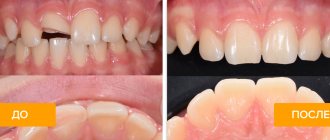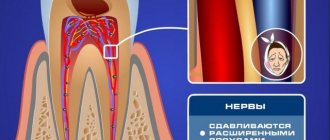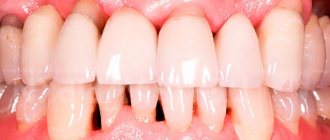What happens when you get hurt
Many people mistakenly consider a bruise to be a harmless injury. In fact, it can be dangerous, especially if it affects internal organs.
A bruise is damage to soft tissues without significant destruction of their structure. In this case, the vessels burst, from which fluid is released into the interstitial space, where it accumulates.
Based on the degree of tissue damage, there are:
- Minor damage that goes away on its own.
- Bruised muscle tissue with hematoma and swelling, very painful.
- High probability of tendon damage.
- Contusion of internal organs with severe swelling and severe pain.
If you suspect a bruise, you need to make sure that there is no fracture, so you need to contact a traumatologist.
Why does swelling persist for a long time after a bruise?
If after a bruise the swelling does not go away for a long time (more than 5 days), then there is a risk of suppuration, extensive or deep tissue damage. Recovery is also slower in cases of weak blood circulation in elderly patients with vascular diseases or venous insufficiency (for example, varicose veins of the lower extremities).
It is impossible to independently determine the cause of swelling and prolonged stagnation of blood, difficulty moving, therefore, such symptoms require examination by a surgeon or traumatologist, radiography and other diagnostic methods.
Symptoms of bruise
It is not always possible to independently distinguish a bruise from a closed fracture. It is believed that with mild injury, the pain becomes less pronounced 2-3 hours after the injury. But in reality, it often happens that a fracture hardly bothers you, but a bruise causes a lot of unpleasant sensations even in the second and subsequent days.
Main symptoms of bruise:
- strong pain;
- internal or subcutaneous hemorrhage;
- edema;
- decreased mobility of the damaged area.
Bruising and swelling may appear immediately after injury or several hours later. Their severity depends on the depth of the lesion. The pain intensifies with pressure, and swelling sometimes increases for several days. Since the signs of a bruise and a fracture are similar, it is better to conduct an X-ray examination to ensure the integrity of the bones.
Swollen Arm or Leg from Impact
There are no people who are not immune from bruises , which lead to swelling and swelling of the arms or legs, and the damaged area and internal hemorrhage. If you consider your injury to be serious, you should first consult a doctor to consult with him and take an X-ray of the injury .
If
the injury is not serious, you can help yourself at home.
To slow down the swelling of the arm or leg of the damaged area of skin and eliminate internal hemorrhage apply ice to the bruise and hold it for at least an hour. After this, anoint the bruise with bodyaga pulp, which is usually sold at the pharmacy in the form of powder or ointments. Bodyaga will relieve swelling, reduce pain, and also prevent internal hemorrhage .
If severe pain from a bruise bothers you, you can buy various ointments at the pharmacy: doltit, dolobene gel, febrofide and fastum gel. Such ointments eliminate pain, relieve swelling and slow down inflammation. Remember that applying the ointment to the damaged area of skin should be done according to the instructions.
A few days after you have been bruised and have a swollen leg or arm, it is okay to use warm compresses. You can use a compress of vodka and horseradish root. The juice of this root should be mixed with vodka in a one to one ratio. After this, apply the prepared compress to the bruise .
Perennial aloe is considered a good assistant in eliminating edema, which also helps with bruises and with the rotting of wounds resulting from this injury. Mix aloe leaves with honey and apply to the damaged area.
Fresh cabbage leaves can help with bruises To make a medicinal product from them, beat the cabbage leaves until the juice releases. When applying to a bruise, change the cabbage leaves approximately every 30 minutes.
copes well with bruises . Grate a large onion on a coarse grater, and use the resulting pulp as a compress.
slow down inflammation and relieve swelling . It should also be grated (on a small grater), and then the resulting mass should be applied to the damaged area. When your leg or arm is swollen from a bruise, you should definitely consult a doctor at the emergency room ( traumatologist ) in order to consult with him and take an X-ray of the bruise .
In the Multidisciplinary Medical Network, you can take an x-ray of the bruise and consult with an experienced traumatologist
Treatment Options
The easiest way to help with a bruise is cold.
It is better to apply a wet cloth rather than ice to reduce the risk of a negative skin reaction to the effect. If you only have frozen items on hand, you should wrap them in a cloth or towel. Exposure to cold will not only reduce swelling, but also reduce the severity of pain. It is advisable to apply compresses every 2 hours, the duration of exposure is 5–10 minutes. It is not recommended to leave it for a long time, as negative reactions from the skin and blood vessels are possible.
Two types of ointments help speed up recovery: based on leech extract - SinyakOff, and with substances that correct microcirculation - Troxerutin. It is enough to apply them to the problem area 2 times a day for a noticeable effect. They improve blood circulation, which causes swelling to resolve faster.
A bruise may make it difficult for a person to move the injured part of the body. It is recommended to apply a bandage made of an elastic bandage in order to disturb the injured area less. The fixation should be tight, but not compress tissues and organs.
Read also: Leg pain: causes and treatment
How long does it take for a tumor to go away after an impact?
The swelling after an impact, in the absence of complications, goes away within 3-7 days, depending on the location and severity of the injury. A sign of a normal recovery period is a gradual decrease in pain, swelling, and the ability to move the affected part of the body.
When complications arise or there is a fracture, swelling and pain increase all the time, mobility is absent due to unbearable pain, the area of injury turns red and becomes hot to the touch. If the victim’s condition begins to worsen the next day, then this is a reason to immediately call a doctor.
How to help from within
Help with serious bruises is needed not only externally, but also from the inside. It is not necessary to take medications so as not to put a strain on the liver. There are natural ways to support the body:
- rose hips, currants and citrus fruits are sources of vitamin C to strengthen blood vessels;
- cabbage, spinach - rich in vitamin K, which is necessary for normal blood clotting;
As a pharmacy vitamin, you can take Ascorutin. This is an inexpensive but effective way to strengthen blood vessels
Dear patients! Remember that only a qualified doctor can make an accurate diagnosis, determine the causes and nature of the disease, and prescribe effective treatment. You can make an appointment with our specialists or call a doctor at home by calling 8-(4822)-33-00-33
Be healthy and happy!
When to see a doctor
You need to visit the emergency room in all cases of injury to the head, chest, back, or abdomen. They can have serious consequences in the future, and it is difficult to assess the condition of the victim in the first hours. Often a person feels satisfactory due to the pain-relieving effect of the release of stress hormones, even with severe injury.
Warning signs requiring emergency medical attention include:
- severe weakness;
- pale skin and cold sweat;
- drop in blood pressure (below 100 mm Hg for systolic, that is, the upper level);
- weak (thready) pulse;
- nausea and headache, dizziness, lethargy, stunned state;
- difficulty taking a deep breath, lack of air;
- interruptions in heart rhythm;
- fainting;
- inability to move due to weakness of the legs and arms;
- coughing up blood.
Extensive swelling with severe pain and difficulty supporting the limb often occurs with a fracture or dislocation, or torn ligaments. They require mandatory x-rays and sometimes require fixation with a plaster cast. Such injuries cannot be cured with external remedies and pills.
You can relieve swelling after a bruise in the first day with cold and ointments that facilitate the outflow of blood. In the future, physiotherapy is used, and for minor injuries, folk remedies are used. Prolonged pain and swelling are signs of serious injury or complications.
Using warm compresses
When you think of applying heat, associate it with chronic discomfort. Cramped or tense muscles, stress, muscle fatigue, and sometimes even chronic back pain can be reduced by applying heat.
Heat works by increasing blood flow to the affected area, making collagen fibers more flexible and helping to loosen stiffness in muscles and joints. The benefits of heat include pain relief, reduction of chronic pain, increased blood flow, and decreased tension.
Heat helps relax and soothe muscles, and increased blood flow can help with the recovery process Heat wraps and hydrotherapy are two main ways that heat can be applied to the body However, heat should not be used for acute injuries as it can increase inflammation, pain and even damage tissues in a specific area. It's always best to keep warm for strain and fatigue, leaving ice for acute injuries.
3 ways to supply heat:
Wet Hot Towel – Wet the towel and place in the microwave for 2-3 minutes. Place in a dry towel before use.
Microwave warmers - simply heat in the microwave and enjoy the warmth. Please pay attention to the manufacturers' warnings.
Electric heating pads - just plug in and use! Be careful when applying. Please pay attention to the manufacturers' warnings.
Diagnostics
A bruise is easy to diagnose, but only doctors can determine its severity and possible complications. Therefore, if for any reason the injured area is bothering you, it is better not to waste time and seek professional help. The diagnosis can be made:
- inspection;
- palpation;
- Assessment of symptoms and complaints;
- In some cases, an ultrasound or x-ray examination may be required.
Diagnosis consists of determining not only the presence of a bruise, but also its severity. There are four degrees:
- First degree. This is the easiest and least dangerous option, involving a slight change in the structure of the subcutaneous tissue. There is no bleeding or hematoma, but blue skin discoloration is quite possible. For the first degree of injury, visiting a doctor is usually not required. It is quite possible to limit yourself to home remedies, which, with the right approach, will help eliminate symptoms in 5-7 days;
- Second step. In this case, significant damage to the subcutaneous and muscle tissue occurs. Severe swelling, pain and even hematoma may appear. It is better to treat such a bruise with medications together with physiotherapeutic procedures;
- Third degree. It damages not only muscle tissue, but also tendons. In some cases, the integrity of the skin may be compromised. Since there is a risk of developing an infectious process, examination by a doctor is mandatory.
- Fourth degree. This is the most severe and dangerous degree of injury. It is always accompanied by injuries not only to soft tissue, but also to bone tissue. In this case, there is a high risk of developing various types of complications. It is imperative to seek qualified medical help.
Accordingly, the type of treatment will directly depend on the degree and nature of the bruise.
How to relieve swelling of the eyes and lips
Sometimes, due to the blow, a bruise appears under the eyes , and the eye itself begins to seriously increase in size. Swelling of the eyes brings a lot of discomfort, and does not look very aesthetically pleasing.
In this case, after a blow, it is necessary to consult an ophthalmologist, because even a minor blow can lead to serious vision problems. It is very important that neither the lens nor the retina is damaged.
It is also strongly recommended to visit a doctor if even slight dizziness is noticed. When a person feels well, a visit to a specialist can be postponed and the swelling can be removed alone.
Punching your lip doesn't end with simple swelling. Due to the fact that the skin on the lip is very thin and delicate, the lip cracks. Capillaries that are located closely can also provoke skin rupture. If blood starts to flow from the blow, you must immediately disinfect the injury site.
Following disinfection, it is advisable to immediately apply something cold. The ideal option is ice wrapped in a bag. The skin of the lips after a rupture will need additional care. You must always remember that your lips need to be moisturized and nourished in a timely manner.











